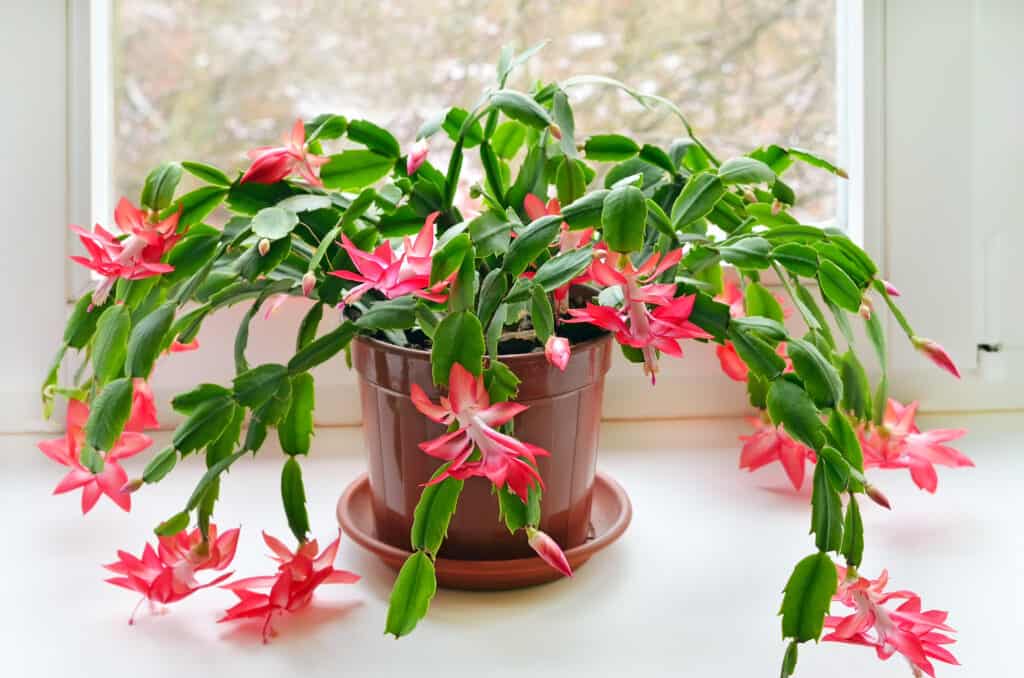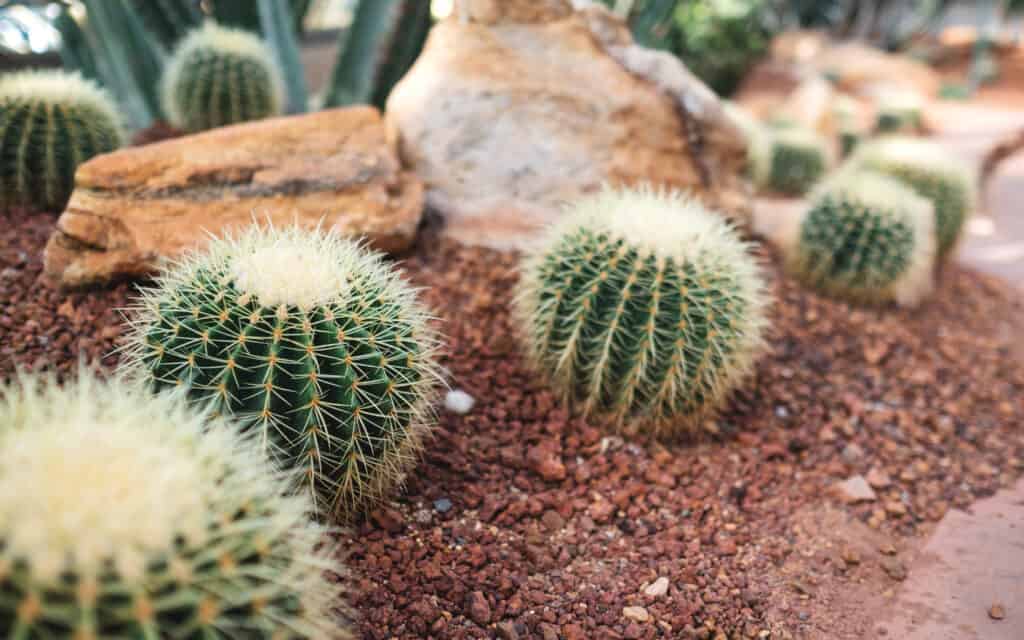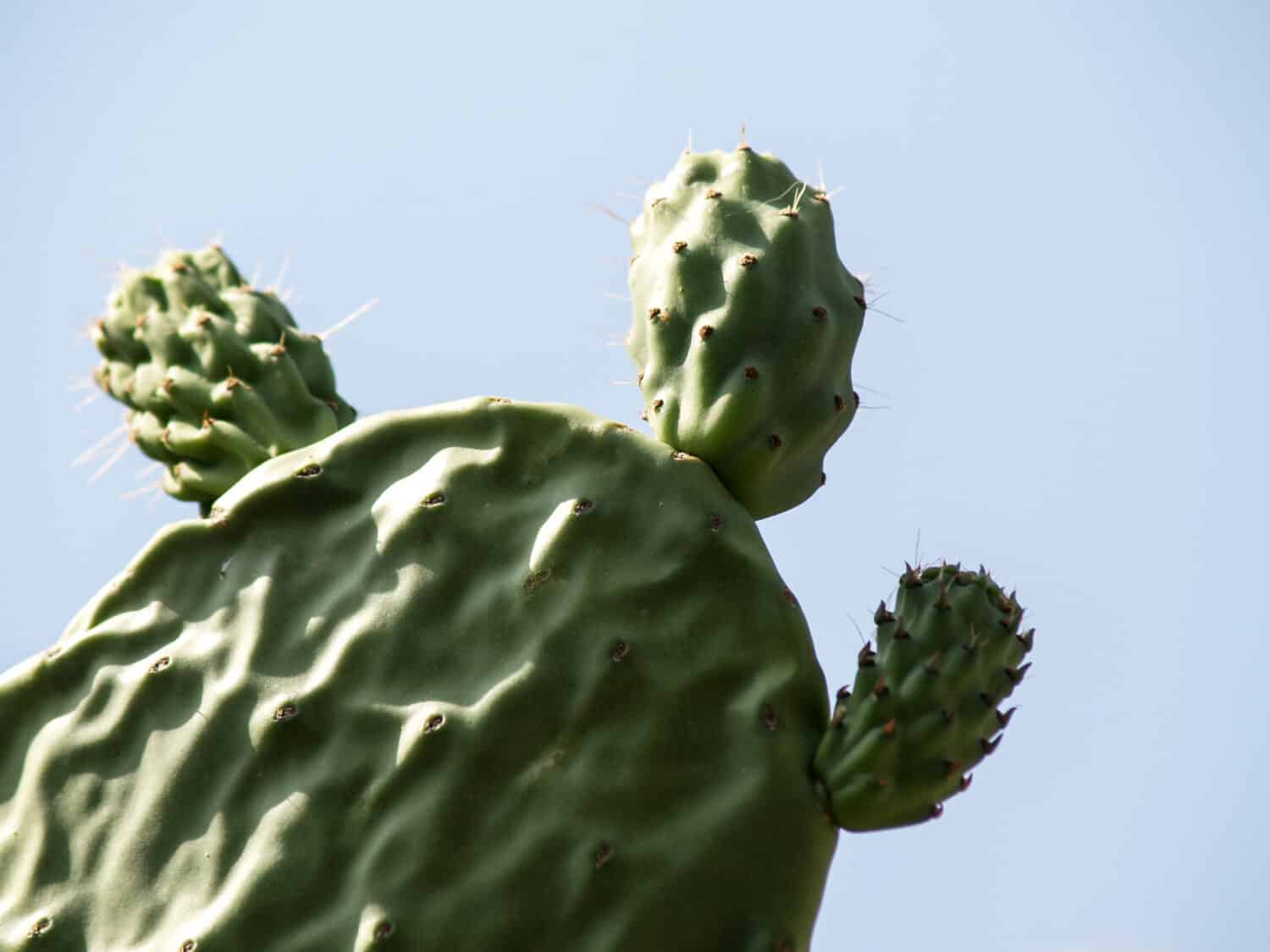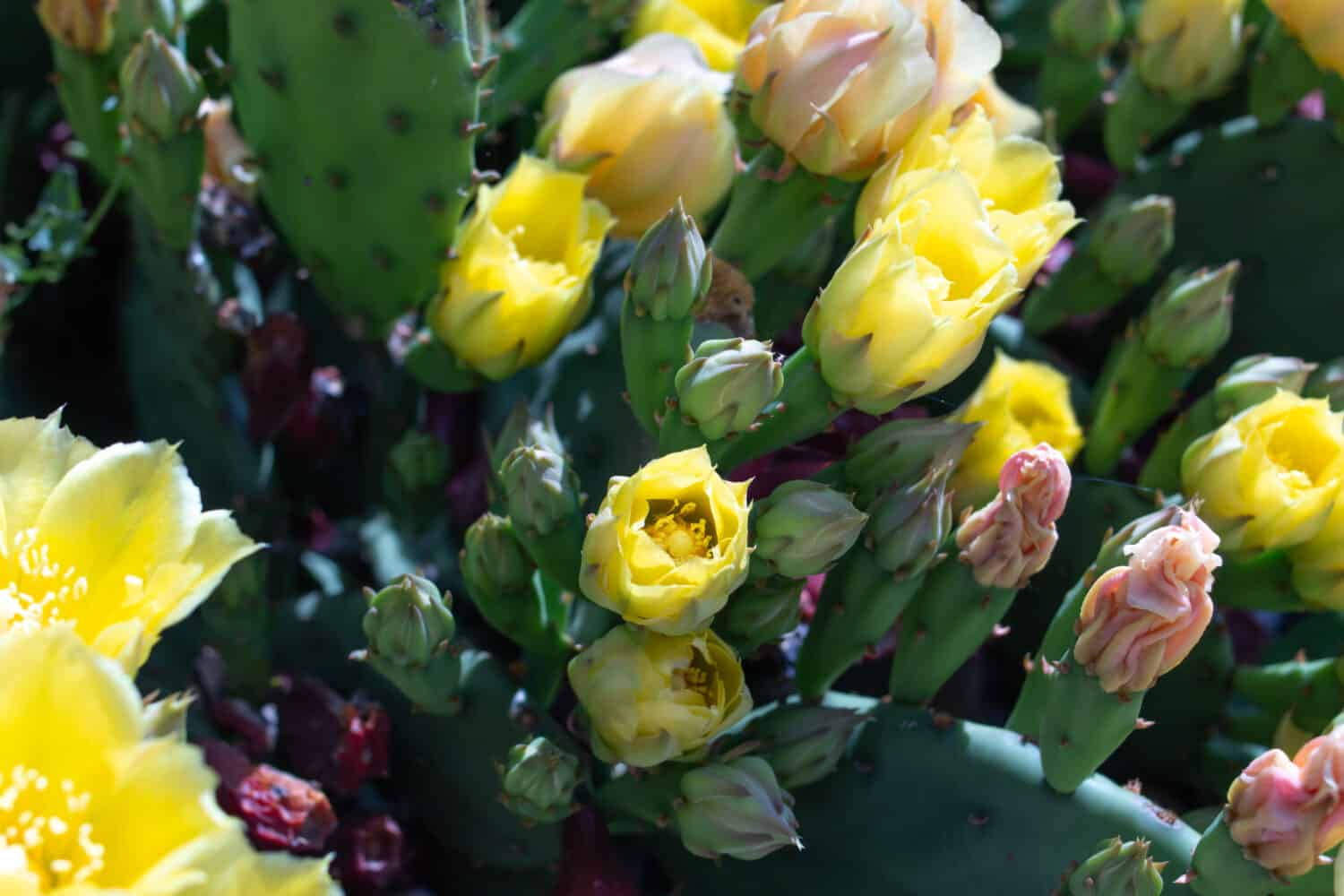When thinking about cacti, you may picture the enormous saguaro or the beautiful prickly pear. But those images are typically set in harsh desert landscapes. It can be hard to imagine cacti growing in other environments. So it may come as a surprise to learn that several species of cacti can thrive in the unique climate of New York State. In fact, there are two cacti species native to the area! In this article, we will discuss the different types of cacti that can grow in New York, how to care for them, and how to cultivate them in your garden. Read on to learn how you can incorporate them into your decor, indoors or out!

The Christmas cactus is a popular addition to houseplant collections, partly because its blooms develop when most other cacti are dormant.
©iStock.com/Nadezhda_Nesterova
Types of Cacti in New York
Despite its reputation of being a cold and snowy state, New York is home to several species of cacti. These plants have adapted to the colder climate and now thrive in the region.
Both cacti species that are now native to the Hudson Valley region belong to the Opuntia (prickly pear) genus. And they offer a fantastic addition to the local flora and fauna. Prickly pear cacti are known for their delicious fruits and gorgeous flowers. Both of those features are loved by local wildlife. Pollinators flock to the flowers when they bloom each year and small creatures love to nibble on the sweet fruit.
The two prickly pear species native to New York are the Opuntia humifusa and Opuntia cespitosa.
Unless you have a keen eye for cacti, you may not be able to spot any differences between the two species at first glance. However, when the flowers bloom in the late spring and early summer, it is finally easier to distinguish between the two.
Optunia cespitosa flowers have a stunning orange or red center to their flowers. It is also the rarer of the two species. You may spot it in the southeast part of Hudson Valley if you are hiking among the limestone, however.
Optunia humifusa, known as the devil’s tongue or Eastern prickly pear, makes its home along the river’s edge. It produces yellow flowers with a bright red center.
Both species are easy to plant at home, either in the garden or in a container. And if you are a fan of cooking with prickly pear pads (nopales) or eating its fruit, growing your own is a fantastic option. Having the plants on hand would make your homemade goodies easier and quicker to produce!
That said, those are not the only cacti that will grow well in New York. The Echinocereus genus is also cold hardy and will survive the colder, northern winters. One beautiful species is Echinocereus triglochidiatus (claret cup). It has gorgeous red flowers in the summer months. Another is E. reichenbachii (lace hedgehog), featuring vibrant magenta flowers.
You may also consider adding a few other varieties to your indoor plant collection. Most cacti will not survive the bitter northern winters if planted outdoors. But that doesn’t mean you can’t enjoy them in a cozy indoor setting. Your local nursery will have multiple options that grow well indoors in cooler climates.
A few lovely cacti species that are suitable for indoor New York settings include:
- Fairy Castle Cactus (Acanthocereus tetragonus)
- Golden Barrel Cactus (Echinocactus grusonii)
- Christmas Cactus (Schlumbergera bridgesii)
- Feather Cactus (Mammillaria plumosa)
- Chin Cactus (Gymnocalycium andreae)

Golden Barrel Cactus (Echinocactus grusonii) are easy to care for and develop beautiful yellow flowers.
©iStock.com/Farknot_Architect
How to Care for Cacti in New York
If you want to plant either of these prickly pear varieties in your garden or yard, there are a few things to consider. Taking the right steps before planting will help set you up for success. And then caring for your plants based on their specific needs will help them thrive in the long term.
Select the Right Location
Even the cacti native to New York need the sun to thrive. So before you plant, take a few moments to find the best location. You will want to look for a spot that receives at least six hours of direct sunlight every day. But since cacti can withstand plenty of direct sunlight, you don’t need to worry about finding a location with afternoon shade.
Provide Well-Draining Soil
This step is important whether you plant your cacti outdoors or opt for a container that you can bring inside during the winter. Cacti need well-draining soil since they are prone to root rot. They don’t require much water and do not like a waterlogged home. So, if you plan on planting your cacti in a container, use a pot with adequate drainage holes and a well-draining soil mix specifically designed for cacti.
Water Properly
Watering cacti can get a little tricky. They need far less than one may think, so it is easy to overwater them. Remember that cacti can tolerate drought and go long periods without water. So you don’t need to water them too often. But they still require regular watering to thrive. In the summer months, water your cacti once a week, making sure to water deeply to encourage deeper root growth. In the winter months, reduce watering to once a month.
Protect from Frost
This step isn’t as vital if you plan to plant your cacti in a container that can travel indoors during cold weather. But if you want to add your new prickly pear to the yard, it is critical. While cacti can tolerate cold temperatures, they are still susceptible to frost damage. Try planting your cacti near a south-facing wall for added winter protection. You can also cover it with a breathable tarp or fabric for further protection.
Monitor for Pests and Diseases
Like all plants, cacti are susceptible to pests and diseases. Regularly monitor your cactus for signs of pests or diseases, and take action as needed to protect your plant.
Prune as Needed
Cacti do not require extensive pruning, but you may need to prune your plant occasionally to remove dead or damaged sections. Use a clean and sharp knife or scissors to make clean cuts, and wear gloves to protect yourself from the sharp spines. Use the same process when harvesting some prickly pear pads for dinner.
Fertilize Sparingly
Cacti do not require a lot of fertilizer, but you may want to fertilize your plant occasionally to help it grow and thrive. Use a fertilizer specifically designed for cacti. But don’t go crazy. A little goes a long way.

There are two prickly pear species native to New York. They are a fantastic addition to your garden if you want to learn how to cook with nopales.
©Rafael SANTOS RODRIGUEZ/Shutterstock.com
Growing Cacti in New York
While growing cacti in New York is not necessarily the easiest task, it is possible. If you select the right species for your outdoor landscape and take proper care of them, your plants will thrive. Selecting a species that is cold-hardy to your zone will certainly help. If none of the ideas above catch your interest, try speaking with your local nursery or garden center. They are sure to know which species can tolerate the colder winters. Alternatively, don’t feel bad about growing cacti exclusively in containers. Indoor cacti make a lovely addition to any houseplant collection and are sure to add vibrant colors when they bloom.
So tap into your adventurous side and add a touch of the desert to your home!

is native to New York.
©Jade Prevost Manuel/Shutterstock.com
The photo featured at the top of this post is © iStock.com/barbaraaaa
Thank you for reading! Have some feedback for us? Contact the AZ Animals editorial team.






